
Understanding Primary Metastasis of Ovarian Cancer via Imaging Mass Spectrometry of a Novel 3D Tissue Explant and Cellular Coculture
1 /
8ページ
カタログの抜粋
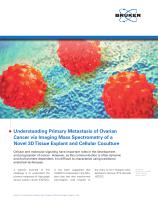
Understanding Primary Metastasis of Ovarian Cancer via Imaging Mass Spectrometry of a Novel 3D Tissue Explant and Cellular Coculture Cellular and molecular signaling have important roles in the development and progression of cancer. However, as this communication is often dynamic and environment-dependent, it is difficult to characterize using traditional analytical techniques. A specific example of this challenge is to understand the primary metastasis of high grade serous ovarian cancer (HGSOC). It has been suggested that HGSOC first develops in the fallopian tube, and then transformed carcinogenic cells migrate to Authors: Dr. Laura Sanchez, Katherine Zink; University of Illinois at Chicago, Chicago, IL, USA. the ovary to form fallopian-tubeepithelium-derived (FTE-derived) HGSOC. Keywords: MALDI-TOF, autoflex, MALDI Imaging, ovarian cancer
カタログの1ページ目を開く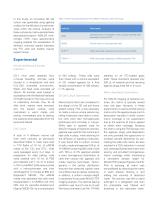
In this study, an innovative 3D cell culture was generated using agarose to allow for the diffusion of small molecules within the culture. Analysis of these cultures by matrix-assisted laser desorption/ionization (MALDI) timeof-flight (TOF) mass spectrometry imaging enabled the visualization of different chemical signals between the FTE cells and healthy ovarian explant tissue. Table 1: Names and descriptions of the 4 different cell lines used in this study. Cell Line Spontaneously immortalized murine oviductal epithelial cells (equivalent of human FTE) Murine ovarian surface epithelial...
カタログの2ページ目を開く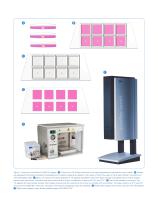
Figure 1: Overview of workflow for MALDI Imaging. A Ovaries from 16-18 day old female mice were extracted and maintained in warm media. B Ovaries are separated from bursa and halved immediately prior to plating. Explants are placed in the center of half of the wells of the 8-well chamber mounted to an ITO-coated glass slide. C 300 µL of various cell cultures prepared in 1% agarose are plated in each well. Each cell type was plated with an ovarian explant and as a pure cell culture. The entire slide was covered with a lid and incubated for 4 days at 5% CO2 and 37°C. D The 8-well chamber is...
カタログの3ページ目を開く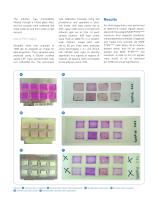
The solution was immediately filtered through a fritted glass filter, and the crystals were collected and dried under air and then under a high vacuum. MALDI-TOF Imaging Samples were first scanned at 1200 dpi to integrate an image for data acquisition. Then, samples were analyzed using a Bruker autoflex speed LRF mass spectrometer over m/z 100-2000 Da. The instrument was calibrated manually using red phosphorus and operated in positive mode, with laser power set to 40%, laser width set to 2 (small) and reflector gain set to 2.0x. At each sample location, 500 laser shots were fired at 2000...
カタログの4ページ目を開く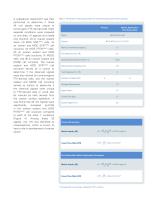
A subsequent experiment was then performed to determine if these 44 m/z signals were unique to tumori-genic FTE-derived cells. Eight separate conditions were prepared on one slide: (1) agarose and media only (control), (2) an ovarian explant alone, (3) MOE SCRshRNA cells, (4) an ovarian and MOE SCRshRNA cell coculture, (5) MOE PTENshRNA cells, (6) an ovarian explant and MOE PTENshRNA cells coculture, (7) MOSE cells, and (8) an ovarian explant and MOSE cell coculture. The ovarian explant and MOE SCRshRNA cell coculture served as a control to determine if the observed signals were also...
カタログの5ページ目を開く
However, due to the mixed coculture design of this experiment, it was unclear whether the norepinephrine was originating from the ovarian explant or MOE PTENshRNA cells. An experiment utilizing plastic tabs to divide the 8-well chamber was designed to embed the ovary separately from the cells in order to visualize the localization of the norepinephrine signal. Nine of the 33 signals identified as significant in the original experimental design were also detected here, including norepinephrine (Figure 5). It was clear from the spatial distribution of the signals that the ovary was the source...
カタログの6ページ目を開く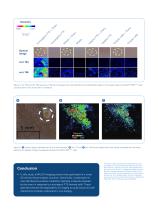
Figure 4: m/z 104 and m/z 136 were two of the 33 m/z signals that were identified to be significantly higher in the ovarian explant and MOE PTENshRNA cells coculture than in any of the other 7 conditions. Figure 5: A Optical image of divided well of an 8-well chamber; B m/z 112 and C m/z 144 are two signals that were clearly originated from the ovary explant and migrated through the agarose towards the MOE PTENshRNA cells. Conclusion • In this study, a MALDI Imaging protocol was optimized for a novel 3D cell and tissue explant coculture. Specifically, norepinephrine was identified as...
カタログの7ページ目を開く
Learn More You are looking for further Information? Check out the link or scan the QR code for more details. Bruker Daltonik GmbH Bremen · Germany Phone +49 (0)421-2205-0 ms.sales.bdal@bruker.com – www.bruker.com to change specifications without notice. © Bruker Daltonics 04-2019, MSI-09, 1868198 For Research Use Only. Not for Use in Clinical Diagnostic Procedures. Bruker Daltonics is continually improving its products and reserves the right
カタログの8ページ目を開くBruker Daltonics Inc./ブルカーのすべてのカタログと技術パンフレット
-
IntelliSlidesTM
2 ページ
-
CMC-assist
2 ページ
-
Toxtyper
8 ページ
-
Product Overview
16 ページ
-
spotOn™
4 ページ
-
Metabolomics
8 ページ
-
TASQ Software
4 ページ
-
timsTOF™
8 ページ
-
TargetScreener
6 ページ
-
timsTOF Pro
6 ページ
-
Quant Proteomics
8 ページ
-
MBT Galaxy RUO
4 ページ
-
MBT Pilot RUO
4 ページ
-
MBT SMART IVD
4 ページ
-
MBT Consumables RUO
4 ページ
-
MBT Sepsityper
6 ページ
-
MBT BTS US
2 ページ
-
MBT Pharma
8 ページ
-
MALDI Imaging
16 ページ
-
MALDI Biotyper CA System
12 ページ
-
Bruker ToxScreener
6 ページ
-
ProteinScape
8 ページ
-
maxis II
12 ページ
-
EVOQ
6 ページ
-
impact II
12 ページ
-
micrOTOF II
8 ページ
-
ImagePrep
4 ページ
-
DE-tector
6 ページ
-
pTD
2 ページ
-
RAID AFM
4 ページ
-
RAID XP
4 ページ
-
RAID S2
6 ページ
-
RAID M100
6 ページ
-
MM2
6 ページ
-
SVG 2 and Probes
6 ページ
-
µRAID
4 ページ
-
VeroTect
4 ページ
-
SIGIS II
2 ページ
-
solarix XR
12 ページ
-
The new autoflex speed
10 ページ
-
Product Overview
20 ページ
-
impact HD
12 ページ
-
Toxtyper
6 ページ
-
micrOTOF-Q III
6 ページ
カタログアーカイブ
-
EVOQ - 2014
6 ページ














































































